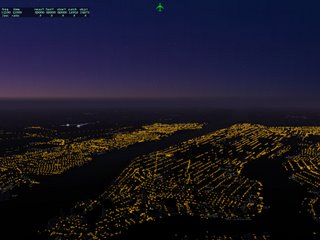So if we're not doing that yet, what is the point of the RFC? Well, we've been debating "next-generation" airports (meaning a system that provides something more flexible than a set of overlapped quad-polygons) for years now, trying to weigh the alternatives. Here's a summary of how the new scheme compares as an approach:
- The new apt.dat is a "low-level" approach. The old apt.dat format didn't allow us to analyze the taxiway layouts to determine what represented a single taxiway - it was just concrete that we hoped looked right based on user design. The new format continues this; we give you the flexibility to make almost anything and hope you pick something good.
- Non-runway pavement is changing to bezier-curve-based polygons, for a lot of control and flexibility over the look of the layout. One advantage of bezier curves is that the sim can render the curves using more triangles on faster systems (for a nicer look) and fewer triangles on a slower system (for better framerate).
- Runway lines and markings are relatively independent of the pavement. While they can be embedded on the edge of pavement, they can also be placed anywhere you want.
- There won't be a lot of new objects - those belong in overlay DSFs.
- There aren't "ATC" features (e.g. names of taxiways, paths for AI planes to take) - those will be added when we're ready to code them in the sim.
- There's almost nothing automatic. X-Plane doesn't analyze the apt.dat file and place signs, lines, lights, etc.
So in this sense the 850 apt.dat continues the direction DSF took of making a flexible low level format that leaves the ultimate decision of how the scenery looks in the hands of the author (by editing the file) rather than in the hands of the sim.

